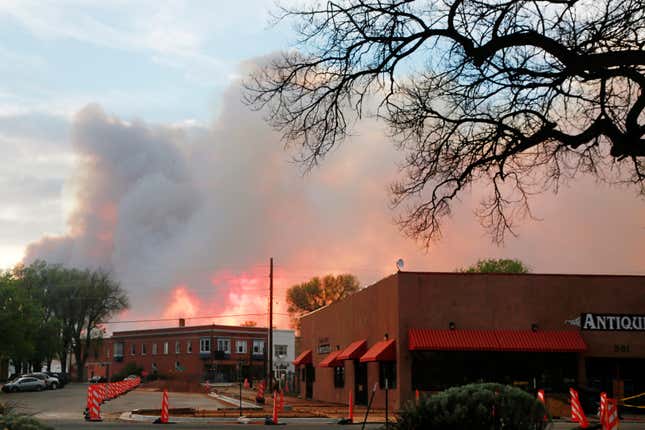
In northern New Mexico, the Calf Canyon/Hermits Peak fire is now the single largest in state history, blazing through more than 298,060 acres so far. The second-largest fire was 2012's Whitewater-Baldy burn, which swept through 297,945 acres. The ongoing fire has led to widespread evacuations and the destruction of buildings and homes, but so far no deaths have been officially reported.
The Calf Canyon/Hermits Peak blaze has spread by more than 90,000 acres this week alone and is just 27% percent contained as of Monday. In the immediate, dry thunderstorms, low humidity, and wind are all expected to keep the fire spreading, according to the U.S. Forest Service.
Multiple other fires are also burning in the state, but none on the scale of the Calf Canyon/Hermits Peak blaze. The Cerro Pelado fire is burning to the west, has covered more than 45,605 acres, and is at 62% containment. The Cooks Peak fire is burning to the northeast of Calf Canyon/Hermits Peak, has covered more than 59,359 acres, and is almost entirely contained at 97%. At least three other small blazes are active farther south in the state.
Thousands of homes, predominately in Mora, San Miguel, and Taos counties, have been evacuated. On May 6, New Mexico Governor Michelle Lujan Grisham said that about 16,000 homes were under evacuation orders, affecting between 30,000 and 40,000 people, according to reporting by the Santa Fe New Mexican. And, as of May 5, at least 170 homes and 580 structures have been destroyed, according to the Albuquerque Journal.
The Hermits Peak fire was declared a wildfire on April 6, before merging with the Calf Canyon blaze on April 19. Hermits Peak began as a prescribed burn and was reportedly set under spot forecast conditions of low humidity and wind—not ideal for a controlled fire. New Mexico Congresswoman, Teresa Leger Fernández, has criticized the Forest Service for going forward with the planned burn and called for an internal investigation in an open letter.
April and May are early months for fires of this size in New Mexico, where burn season typically peaks in June. However, New Mexico is burning amid historic dry conditions, likely amplified by human-caused climate change.
The Southwest is currently experiencing its worst drought in about 1,200 years. Wildfires in the region are also burning in Arizona, Texas, and Colorado. Climate change has been making fire seasons longer, causing them to both begin earlier and end later in the year. Plus, climate change exacerbates heat and drought, two major drivers of wildfires.